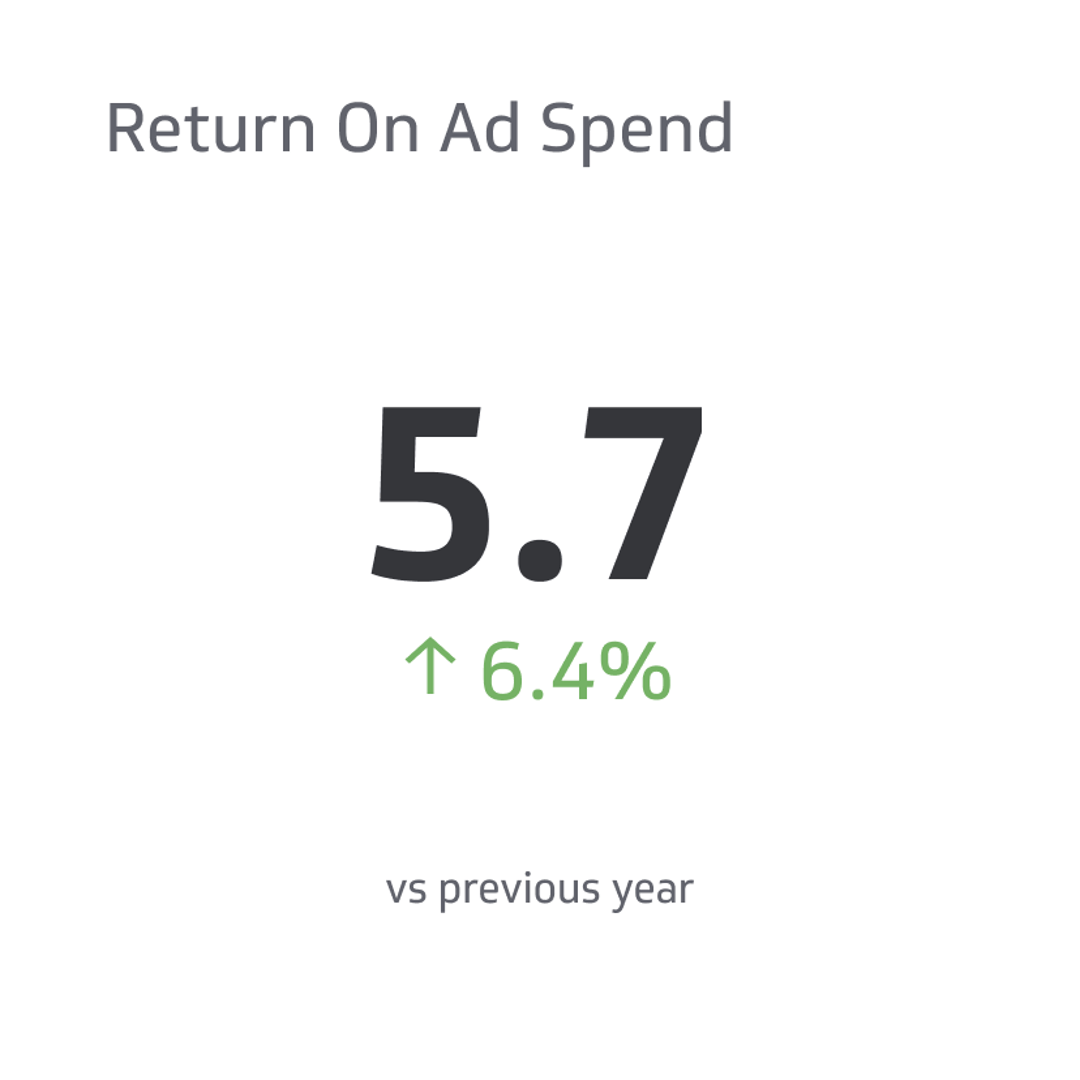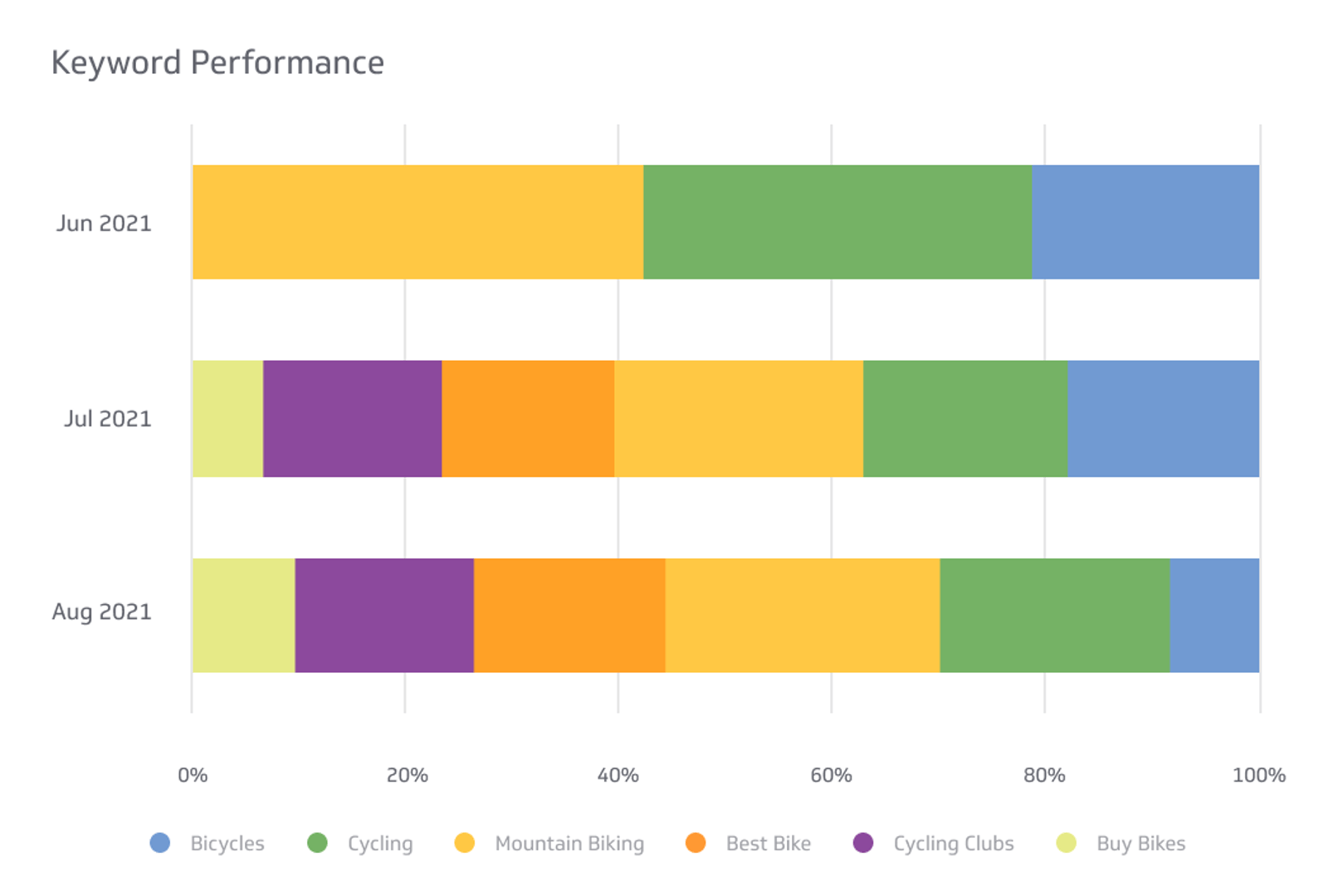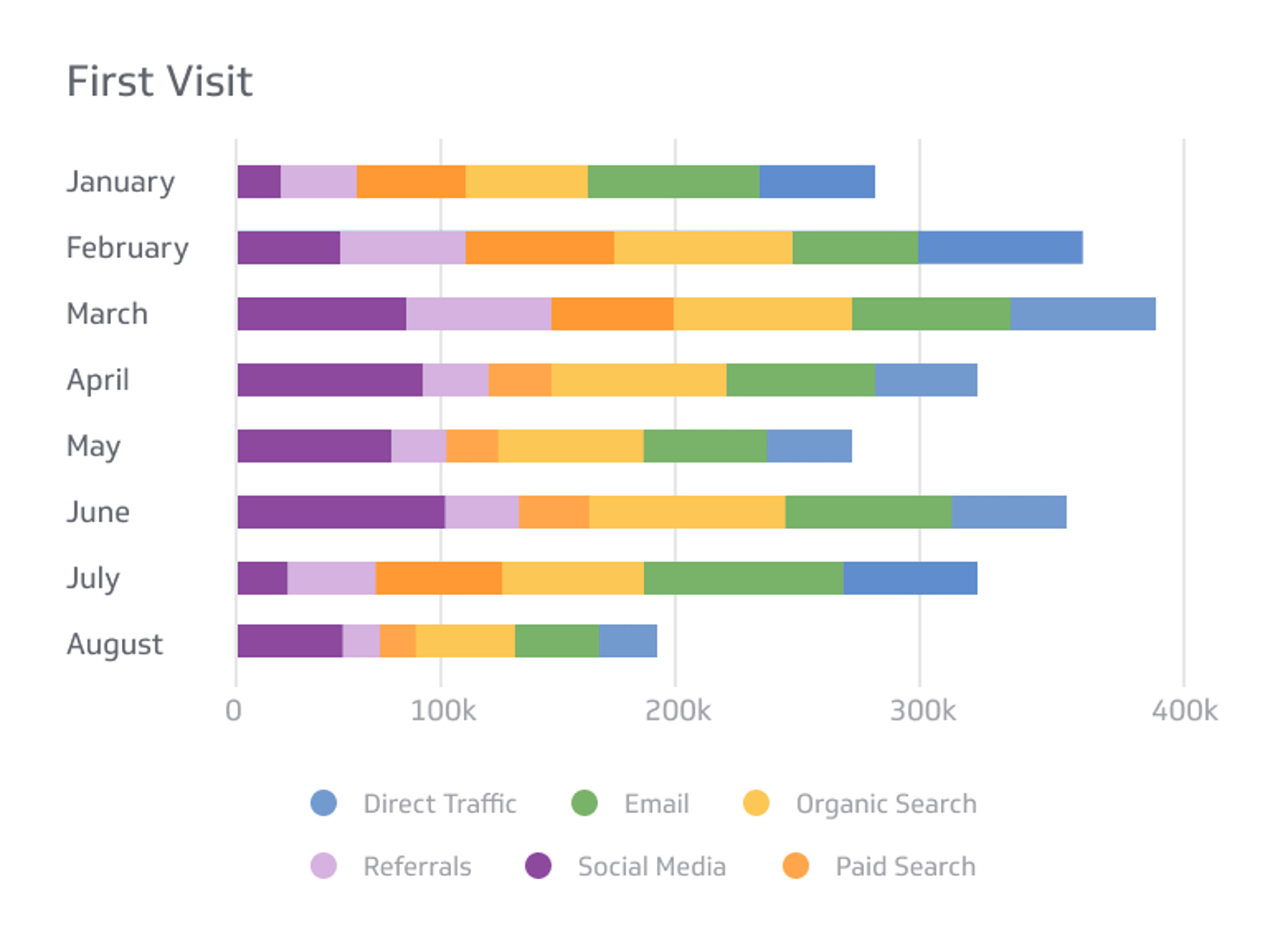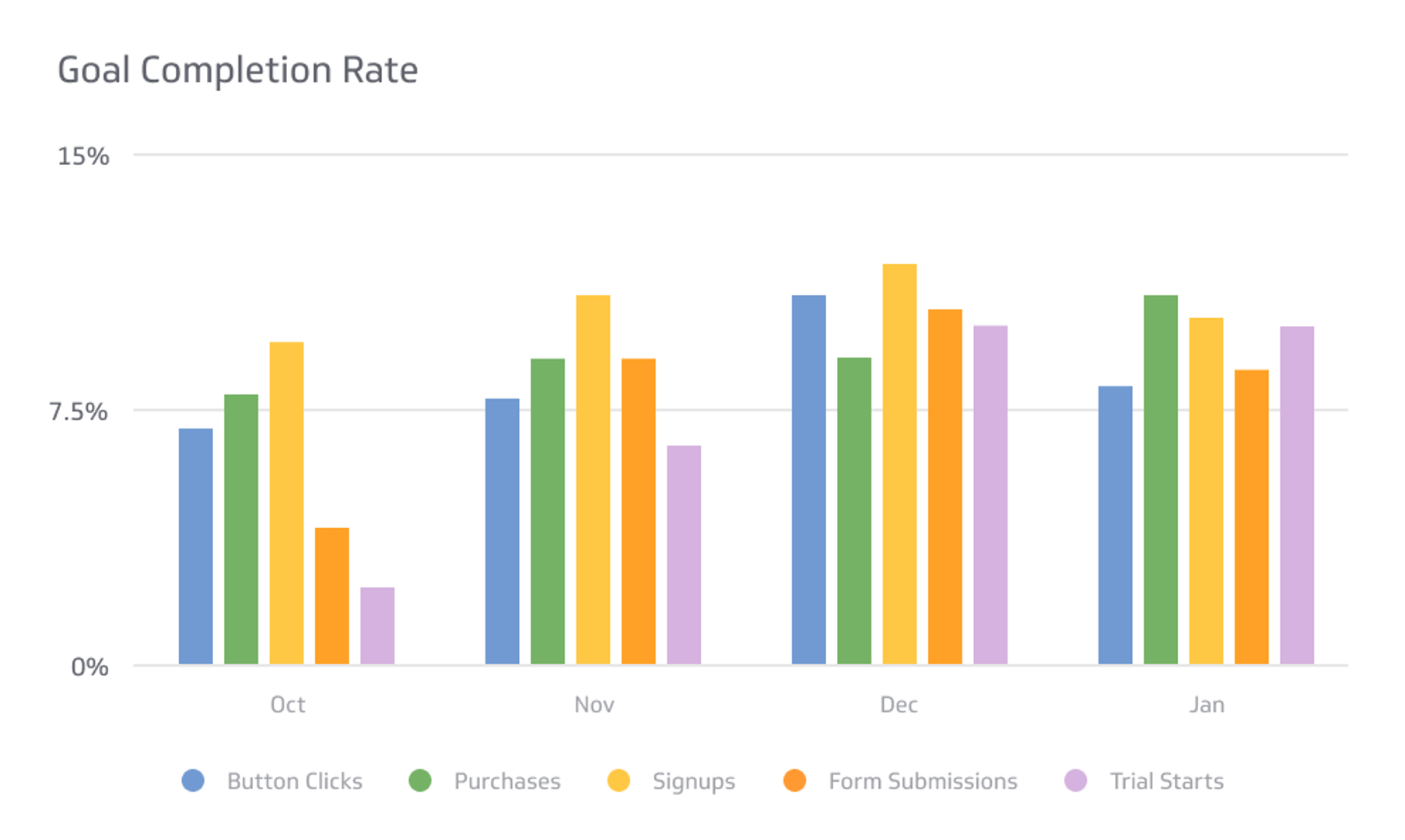Return On Ad Spend (ROAS)
ROAS is a formula that calculates the value of ads based on the revenue generated from them in comparison to the amount of money spent.
Track all your Digital Marketing KPIs in one place
Sign up for free and start making decisions for your business with confidence.

If businesses want to succeed, they must track their expenses compared to what they make to know if their efforts lead to profits. Such costs compared to profits matter for every business detail, even regarding advertising, so companies must review these points regularly.
If you run a business, you should keep track of your return on investment (ROI), which refers to how much you get out of something compared to what you spend. If you want to track the details, you can look at your return on ad spend (ROAS).
What is ROAS?
ROAS is a formula that calculates the value of ads based on the revenue generated from them in comparison to the amount of money spent. This is calculated by dividing the revenue earned from ads by the ad spend.
With that in mind, if you put 10,000 dollars toward digital ads and make 100,000 dollars, you’d plug them into the formula and end up with ten. So that means your business made ten dollars for every dollar it spent on ads.
Similarly, you can calculate the percentage of your ROAS by subtracting the amount spent on ads from the revenue generated and dividing it by the ad spend. Once you do that, you multiply it all by 100, which converts it from a decimal to a percentage.
Going off the previous example, you can subtract 100,000 from 10,000 and get 90,000. You’d then divide 90,000 by 10,000 and get nine. If you multiply nine by 100, you end up with a 900 percent profit compared to what you spent.
That also means you can get the opposite percentage if you made 5,000 but spent 10,000. By following the formula, you’d discover a 50 percent profit decrease, as indicated by the -50.
Why Does ROAS Matter?
ROAS offers tons of vital information to help your business, making it functional while giving you multiple benefits.
- Determine where you gain/lose money
- Decide whether you should make changes
- Track the changes you made
Above all else, you can see if you gained or lost money by tracking the ROAS. If you know how it impacted your sales, you can understand what it means for your business and how the process played out so you don’t repeat mistakes or issues.
Once you understand how ROAS impacts your sales, you can decide whether to change your ads. For example, you may realize you must create different ads or try another channel to see if it works for your brand.
You can also look at the changes you made to your ads and keep track of them. For example, if you notice your ads perform better in the current month over the previous, you know you made positive changes that encouraged people to buy from your business.
You may discover additional benefits as you utilize ROAS, so review it regularly and work on your business.
What Falls Under ROAS?
You can’t always track every part of ROAS. After all, someone could see your ad, make a purchase later, and boost your revenue. While you can’t always track those details, you can follow other methods to see what impacts your ROAS and makes a difference.
- Clicking on ads and buying items.
- Using email marketing ads.
- Tracking social media links.
It all depends on your ad types, such as social media marketing, utilizing Google, and similar methods.
What Is a Good ROAS?
Determining a good ROAS can be challenging based on your business, the expected profits, and how everything connects. For example, some people need help seeing how aspects of their marketing relate to their ads.
While you don’t have the required amount predetermined, you should aim for at least a 100 percent ROAS. Achieving a minimum ROAS of 100% suggests that your ad efforts are worthwhile, but it is important to strive for continual improvement with each subsequent measurement period.
Determine the frequency at which you'll measure your ROAS, such as monthly, quarterly, or every six months, and track your progress compared to previous periods to identify areas of improvement.
Doing so will help you see if you should stick with your current ROAS strategies or need further adjustments to improve your sales.
Improving Your ROAS Strategy
If you need additional guidance, you can follow a few points to help you improve your ROAS strategy.
- Review it regularly
- Have multiple people working with you
- Change what doesn’t work
If you intend to work on your ROAS strategy, you should review it regularly. Spend some time going through your statistics, seeing how your ads perform, and seeing what you can infer based on the information you collect.
You should also have multiple people working on your ads. If you have various people working together and going through the details, you can get multiple viewpoints and adjust your strategy accordingly, improving your odds of success.
Once you identify issues with your ROAS and drop them in, you can make changes based on the information. Use your ROAS to guide your strategy and give you a sense of what customers expect from your business, so you’ll constantly evolve and get more people.
How To Improve Your ROAS
Now that you understand ROAS and how it can impact your company, you should review ways to improve it. Doing so will help you identify the best strategies, try the ideas, and work on your company to reach more people.
The Importance of Value
If you want more people to interact with your business while drawing in more customers, you should offer value to your buyers. That means showing customers why they should buy from you and what makes your business different.
Your ads should showcase your best products, upcoming deals, or anything else that will attract potential customers, providing them with a reason to make purchases.
Doing so means understanding what your customers want from your business and showcasing it. Ensure you know your target audience, make changes based on their wants, and turn more leads into customers.
Find Cheaper Ad Methods
It never hurts to review your current ad methods and try cheaper alternatives to save money and maximize your ROAS. While you shouldn’t sacrifice quality for lower prices, you can utilize specific strategies to create ads without spending much money.
For example, you can make social media posts to share your links with others. You can also utilize email marketing as another ad strategy to get more information to your customers, though traditional ad methods can still work well for your needs.
It comes down to weighing out the costs versus the profits. If the prices make the profits worth it, you should go through with them, but you may need to make some changes if you don’t make enough money through your ads.
Review Advertising Methods
You have multiple ad methods to maximize the value and get more people to learn about your business. In essence, you have various ad types that work for companies, such as display ads, video ads, and native ads.
Display ads have them appear on the website and seem to be the most intrusive while people browse the internet. Video ads are videos you create that people can watch and click on to learn about your business, and native ads make them seem like a natural part of the website.
For example, if you have a native Facebook ad, it’ll look like a post on a timeline rather than an ad on the side. So ensure you watch these methods and see which ones bring the highest ROAS so you know which one needs more money and where to make changes.
Utilizing Active and Direct Language
If you want your ads to succeed, you must talk with the customers. That means avoiding first or third-person speech and using second-person instead, so refer to customers as you instead of he, she, or they.
You should also use active language, asking the customers to act and encouraging them to interact with your business. For example, invite them to do something through your ads and ask them to perform specific actions.
You increase their odds of acting if you remain direct and tell them precisely what you want them to do. If they listen to you and act on what you suggest, you’ll get more ad clicks, leading to more customers and a better ROAS.
Conclusion
ROAS remains an essential aspect of tracking how well your ads perform. If you want to see the value of your odds and determine if you should stick with them, you must understand ROAS, keep track of it, and see what you should do.
If your ads keep performing well, you can utilize them and make the most out of your efforts. Do your best to spread your brand, share it with others, and get more people to learn about your business, so you’ll make more money than you spend on the ads.
Related Metrics & KPIs



